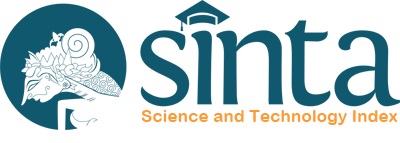ANALISIS KOMPARASI KUALITAS PRODUK KAMPAS REM CAKRAM ANTARA ORIGINAL DENGAN AFTER MARKET
DOI:
https://doi.org/10.35814/asiimetrik.v1i1.219Keywords:
kampas rem cakram, uji tribilogi, uji kekerasan, uji komposisi kimia, struktur mikroAbstract
Penelitian ini membahas analisis perbandingan kualitas produk kampas rem jenis cakram (disc brake) antara original dengan aftermarket . Analisis dilakukan pada hasil uji tribologi (uji friksi dan keausan), uji kekerasan, komposisi kimia dan struktur mikro untuk mengetahui ketahanan gesekan dan aus serta bahan yang digunakan. Dari hasil uji diperoleh perbandingan kualitas kampas rem original dan aftermarket yang lebih baik adalah original dimana nilai koefisien
friksi 0,14 dibanding 0,11, sedangkan keausan (kondisi normal) 1.35 x 10-7 g/mm2.detik dan 1.22 x 10-6 g/mm2.detik. Dari uji kekerasan diperoleh kampas rem original kekerasan rata-rata 65.567 HVN dan untuk aftermarket adalah 13.983 HVN, untuk hasil uji komposisi kimia dan struktur mikro menunjukan bahwa material kampas rem original menggunakan serat penguat berbahan karbon (C), tembaga (Cu), Besi (Fe) dan Alumunium (Al). Sedangkan bahan serat penguat yang
terdapat pada kampas rem aftermarket adalah asbes, karbon (C), alumunium (Al) dan besi (Fe).
Downloads
References
Aigbodion, V.S. Et al., 2010. Development of asbestos-free brake pad using bagasse, Tribology in industry, Volume 32, (1), , pp. 12–18.
A.E. Anderson,1992. Friction and Wear of Automotive Brakes, in ASM Handbook, Friction Lubrication and Wear Technology, Vol. 18. ASM International, Materials Park, OH, pp. 569–577.
Breuer.B & Bill.K.,2008. Brake Technology Handbook. SAE International, Pennsylvania, PA.
Chan.D., Et al. 2004., Review of automotive brake friction materials, Proceeding Institution Mechanical Engineers Vol 218 Part D: J. Automobile Eng.
Ian Hutchings & Philip Shipway.,2017. Tribology, Friction and Wear of Engineering Material, second edition
Keskin.A,.2011. Investigation of using natural zeolite in brake pad, Scientific Research and Essays Vol. 6(23), pp. 4893-4904.
Liew. K.W., Et al,.2013., Frictional performance evaluation of newly designed brake pad materials, Materail and Design. 48, pp. 25–33.
Maleque M.A,Et al,. 2012. New natural fibre reinforced aluminium composite for automotive brake pad, International Jurnal Mechanical & Material Engineering. 7.
Nagesh S.N., C. Siddaraju, S.V .Prakash, and M.R. Ramesh,.2014., Characterization of brake pads by variation in composition of friction materials, Procedia Mat. Sci. 5, pp. 295–302.
Osterle.W, Et al,.2009. A comprehensive microscopic study of third body formation at the interface between a brake pad and brake disc during the final stage of a pin-on-disc test, Wear 267 , pp. 781–788.
Peraturan Menteri Tenga Kerja Republik Indonesia No. Per.03/Men/Tahun 1985 Tentang Keselamatan dan Kesehatan Kerja Pemakaian Asbes
Butterworth-Heinemann an imprint of Elsevier SAE J661, 1997. Brake Lining Quality Test Procedure. Society of Automotive Engineers International
Singh.T, Et all,. 2015, Assessment of braking performance of lapinus-wollasotnite fibre reinforced friction composite materials, Journal of King Saud University – Engineering Sciences, pp. 1– 8. http://dx.doi. org/10.1016/j.jksues.
SNI 09-2663-1992, Cara Uji Ketahanan Terhadap Air, Larutan Garam, Minyak Pelumas dan Cairan Rem Untuk Kampas Rem Kendaraan Bermotor
Wirth.A, Et al,. 1994. A fundamental tribo chemical study of the third body layer formed during automotive friction braking, Wear 179, pp. 75–81.





























